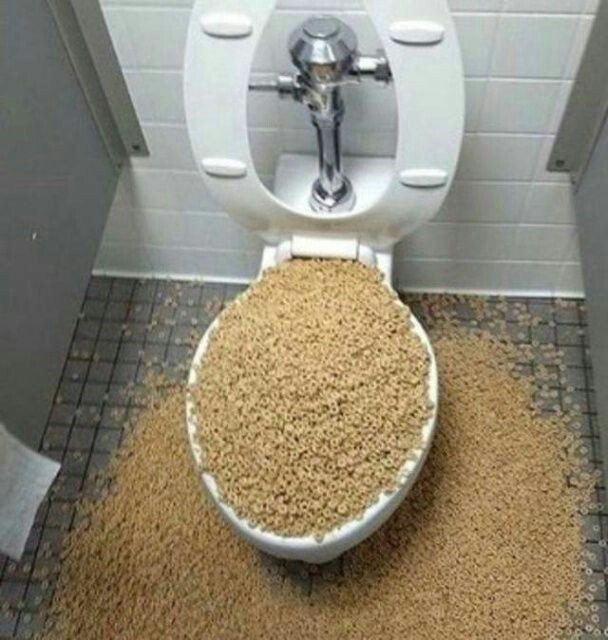Is it Reasonable to Dispose of Food Waste in the Toilet?
Is it Reasonable to Dispose of Food Waste in the Toilet?
Blog Article
We have noticed the article on What Can Happen If You Flush Food Down the Toilet? listed below on the net and figured it made perfect sense to relate it with you on this page.

Introduction
Lots of people are commonly faced with the predicament of what to do with food waste, specifically when it involves leftovers or scraps. One typical inquiry that develops is whether it's alright to flush food down the bathroom. In this short article, we'll look into the reasons that individuals may take into consideration purging food, the consequences of doing so, and alternative techniques for proper disposal.
Reasons why people may take into consideration purging food
Lack of awareness
Some individuals may not know the possible harm caused by flushing food down the bathroom. They might wrongly believe that it's a harmless method.
Convenience
Flushing food down the bathroom might appear like a quick and very easy solution to taking care of undesirable scraps, specifically when there's no neighboring trash can available.
Idleness
In many cases, individuals may simply pick to flush food out of sheer idleness, without considering the effects of their actions.
Consequences of flushing food down the toilet
Ecological effect
Food waste that winds up in waterways can add to pollution and injury marine ecosystems. Furthermore, the water utilized to purge food can stress water sources.
Pipes concerns
Purging food can lead to stopped up pipes and drains, triggering expensive plumbing fixings and inconveniences.
Types of food that should not be purged
Fibrous foods
Foods with coarse structures such as celery or corn husks can get entangled in pipes and cause obstructions.
Starchy foods
Starchy foods like pasta and rice can take in water and swell, resulting in blockages in pipelines.
Oils and fats
Greasy foods like bacon or food preparation oils must never be flushed down the commode as they can solidify and trigger clogs.
Proper disposal techniques for food waste
Utilizing a garbage disposal
For homes furnished with garbage disposals, food scraps can be ground up and flushed with the pipes system. Nonetheless, not all foods appropriate for disposal in this fashion.
Recycling
Particular food packaging materials can be reused, lowering waste and reducing environmental influence.
Composting
Composting is an environment-friendly means to get rid of food waste. Organic materials can be composted and made use of to enrich dirt for horticulture.
The relevance of proper waste management
Reducing ecological damage
Correct waste administration practices, such as composting and recycling, aid lessen air pollution and maintain natural deposits for future generations.
Shielding plumbing systems
By staying clear of the technique of flushing food down the bathroom, property owners can stop costly plumbing repairs and preserve the honesty of their pipes systems.
Verdict
Finally, while it might be alluring to flush food down the bathroom for ease, it is essential to comprehend the prospective repercussions of this action. By embracing correct waste monitoring methods and taking care of food waste sensibly, individuals can add to much healthier plumbing systems and a cleaner environment for all.
FLUSH FOOD DOWN THE TOILET?
FLUSHING FOOD CAN CAUSE BLOCKED DRAINS IN YOUR HOME
All of the plumbing fixtures in your home are connected to the same sewer pipe outside of your home. This outdoor sewer pipe is responsible for transporting all the wastewater from your home to the Council sewer mains. Even small pieces of food that go down the kitchen sink can cause problems for your sewer. It should therefore be obvious that flushing larger bits of food, such as meat, risks a clog in either the toilet itself or the sewer pipes. Flushing greasy food is even more problematic because oil coagulates when it cools, coating the interior lining of your pipes.
THE TOILET IS NOT A BIN
Food isn’t the only thing that people shouldn’t be flushing down the toilet. People use the toilet to dispose of all kinds of things such as tampons, makeup wipes, dental floss, kitty litter and even underwear. Water goes to great lengths to educate residents about the high costs and stress placed on wastewater treatment systems simply from people flushing the wrong stuff down the toilet. It costs taxpayers millions of dollars each year, and homeowners thousands in blocked drain repairs.
FLUSHING FOOD IS A WASTE OF WATER
Flushing food is a waste of our most precious resource - water. In June this year Level 1 water restrictions were introduced to protect water supply from drought conditions. Much of New South Wales continues to be affected by prolonged drought with recent figures revealing up to 97 per cent of the state remains in drought. Depending on whether you have a single or dual flush toilet, every single flush uses between five and 11 litres of water. In the current climate this is a huge amount of water to be wasting on flushing food that should be placed in the bin (or better yet, the compost).
https://www.jabplumbingsolutions.com.au/blog/can-you-flush-food-down-the-toilet

I'm very interested in Think Twice Before Flushing Food Down Your Toilet and I hope you enjoyed reading the new blog entry. Do you know about anybody else who is sincerely interested in the niche? Take a moment to promote it. Thank you for your time spent reading it.
Here Report this page